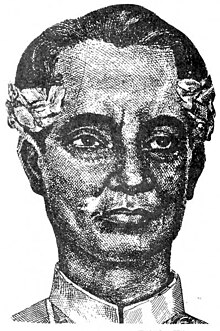Francisco Balagtas
Who Was He?
- Francisco Balagtas was a great Filipino poet
- The renowned literature, Florante at Laura is his famous work
- His other works are Mahomet at ConstanzaBayaseto at Dorsalica and Rodolfo at Rosamunda
- From his name, we derived the Balagtasan (or poetry duel)
- He lost his love, Celia.
He was the forth and youngest child of Juan Balagtas and Juana de la Cruz. He was born on April 2, 1788 in Panginay, Bigaa, in the Province of Bulacan.
Because of his wit and intellect, he was able to finish Theology and Philosophy in Colegio de San Jose. He learned to write poetry and his first teacher in writing is Dr. Mariano Pilapil and learned to write poetry from Jose dela Cruz (Huseng Sisw), one of the most prominent of Tonda at that time.
In 1835, Balagtas moved to Pandacan, Manila where he met the love of his life, Leonora Rivera, who was referred to as “Celia” and “Mar” in his work, Florante at Laura. And it was her who gave Balagtas great inspiration to write.
In was not easy for him to be with “Celia,” he was accused and imprisoned by his rival, prominent Mariano Kapule. While in prison, he got inspiration to write Florante at Laura. His work described his oppressed situation in society and failed romance.
In 1838, he was released from prison, and settled in Balanga, Bataan in 1840, where he became associate to the Just of the Peace. He also held office as court translator. On July 22, 1842 he married Juana Tiambeng and had eleven children.
In 1856, he became Major Lieutenant. Because of another unfortunate event, he was accused that he order a housemaid’s head to be shaved, he was convicted and imprisoned in Bataan. Upon serving several years in jail, he was again freed in 1860. He continued to write interesting poems and carried on his job as translator of Spanish documents. In February 20, 1862, he died. He was 74 years old.
To immortalize Francisco Balagtas' legacy, landmarks were raised that includes:
- The Balagtas Elementary School was established to honor him. The school was located in Sta. Cruz, Manila.
- In Pandacan, Manila, there’s also Plaza Balagtas to commemorate his contribution.
- In Manila, there are a lots of streets named after characters of Florante at Laura.
- His birthplace Bigaa was renamed to Balagtas to give honor to him.
- Museums, monuments and many historical markers were buill to honor his name.
His literary works are:
Ang Orosman at Zafira, Mahomet at Constanza, Almanzor y Rosalina, Clara Belmori, Abdol yMiserena, Auredato y Astrone, Bayaseto at Dorsalica, Rodolfo at Rosamunda, Florante at Laura, Nudo Gordiano, La India Elegante y El Negrito Amante.

















